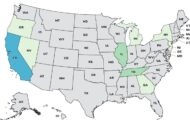The state of California has been dealing with the largest hepatitis A outbreak in the state’s history. The virus is being spread person-to-person, but since several businesses have reported ill employees in the past few weeks, contaminated food may also be to blame.

As of October 6, 2017, there are 576 cases of hepatitis A in that state. Three hundred forty-two people have been hospitalized, which is a very high number for this type of outbreak. And the number of vaccinations distributed by the California Department of Public Heath has reached more than 80,000.
Governor Jerry Brown declared a state of emergency because of a lack of vaccines in the hepatitis A outbreak in that state that has killed eighteen people. This means the California Department of Public Health can buy and distribute vaccines to communities.
The strain of virus that has caused this outbreak is not commonly seen in the United States. It is more common in the Mediterranean region, South Africa, and Turkey. Most people sickened in this outbreak are homeless, use illicit drugs, or both, but some patients do not fit into either category.
There was an employee who had hepatitis A who worked at the World Famous Restaurant in 711 Pacific Beach Drive in San Diego, California. Officials aren’t sure if that illness is related to the larger outbreak. That employee worked at the restaurant in late August and early September, 2017.
Risk factors for hepatitis A include traveling to a country where the illness is common; using illicit drugs; being homeless; or being in the same household or having sexual contact with a person who is ill.
Since the virus is spread through feces, homelessness is exacerbating the problem. That population does not have easy access to clean toilets and hand washing facilities.
The symptoms of hepatitis A include jaundice (yellowing of the eyes and mouth), lethargy, loss of appetite, weight loss, clay colored stools, dark urine, joint pain, abdominal pain on the right side of the body, and a low grade fever. Symptoms usually begin 14 to 50 days after exposure to the virus. Most people recover on their own, but some, especially those with liver disease, may get very sick and can die.
The best way to prevent the spread of this virus is to wash your hands well with soap and water after using the bathroom, taking care of someone who is sick, and changing diapers. Stay home from work or school if you are sick. Officials are urging the public, especially anyone who works with the public such as school or restaurant employees, to be vaccinated.




